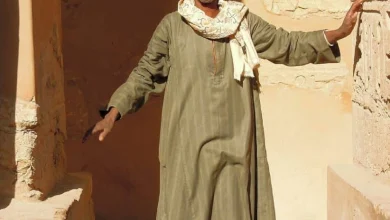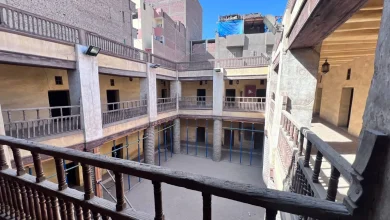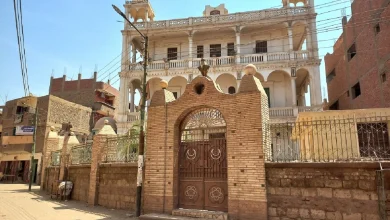
The story of “Sheikh Tawfiq” in Al-Qusair
In the center of Al-Qusair on the Red Sea coast, the house of “Sheikh Tawfiq Ali Mustafa” tells chapters of a history that spans more than a century. This house was known among the locals as “the house of ghosts” before it was converted into a heritage hotel that reflects the spirit of the city and its ancient features. The house combines Islamic architecture with a local character inspired by the sea, becoming a distinctive model for the revival of old houses and their transformation into landmarks that preserve Al-Qusair’s identity and bring its forgotten heritage back to life.
Date of construction
Dr. Taha Al-Jawahiri, a researcher in the heritage of Al-Qusayr and son of Sheikh Tawfiq, the owner of the house, told Bab Masr: “Sheikh Tawfiq Ali Mustafa’s house has succeeded in becoming a symbol of the connection between people and history. It is a living witness to the deep cultural heritage rooted in the consciousness and depths of the Red Sea.”
Al-Jawahiri adds that Sheikh Tawfiq was not just one of the city’s dignitaries. He was an influential figure who contributed to the economic renaissance of Al-Qusayr and played a role in the city’s modern historical transformation. He points out that the house is located in the eastern part of Al-Qusayr, in a neighborhood that was known at the time as the neighborhood of the elders and senior Italian officials who worked in the city during that period. This gives the place special historical and architectural value.
Al-Qusayr Hotel
In his book on the city of Al-Qusayr, author Hammam Kamal al-Din Hussein mentions that what is known today as the “Al-Qusayr Hotel” was originally the home of Sheikh Tawfiq Jubran, one of the city’s most prominent figures. It was built in 1910 to bear witness to a period of prosperity and cultural exchange in the Red Sea region.
Sheikh Tawfiq Jabran lived in this house for about 50 years before his family closed its doors after his death. The author describes the house as being built of stone and wood. Wooden staircases connect its floors, giving it a unique heritage character.
The author notes that Sheikh Tawfiq Jabran’s roots can be traced back to the city of Edfu, where he lived for a short time before moving to Al-Qusayr with the arrival of the Italians to work for the phosphate company. Due to his social status, he assumed the position of sheikh of the Al-Abbadah tribe. This made him a link between the Italian immigrants and the city’s residents.
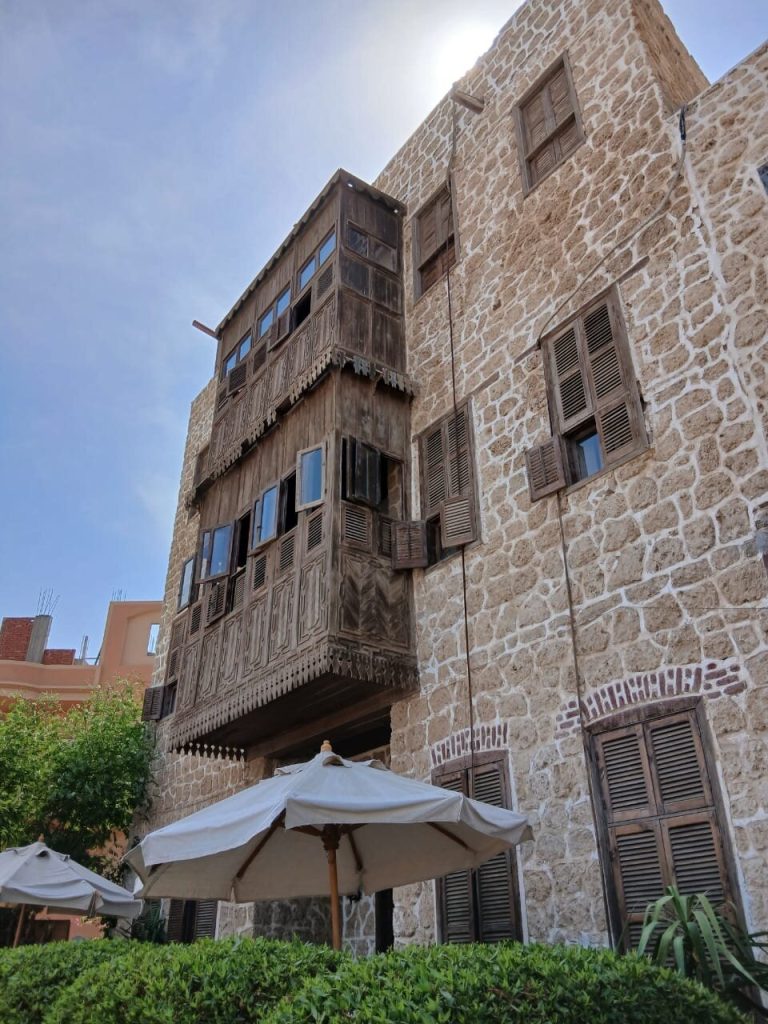
The Swiss Mission
Adel Ash, chairman of the board of directors of the Al-Qusair Heritage Preservation Society, confirms that in 1997, the Swiss Authority restored Sheikh Tawfiq’s house as part of a plan to revive the city’s heritage houses. This was led by Swedish engineer Peter William Berg, who undertook the restoration of the house at his own expense in cooperation with the society.
Ash points out that the restoration work was carried out with the participation of a specialized team of experts and scholars in the field of architecture and heritage. At the end of the project, the house was handed over to the sheikh’s family after its original character and components had been fully preserved. It remains a testament to the history and spirit of the place.
Stages of development
For his part, Dr. Ahmed Yahya Rashid, professor of architecture and president and founder of the Institute of Civilization Rights, explains that the restoration of Sheikh Tawfiq’s house in Al-Qusair was one of the projects closest to his heart, given its unique human and cultural value. He adds that the project succeeded in establishing an integrated vision for the reuse of Al-Qusair’s heritage landmarks. The house was transformed from an abandoned, ghost-like building into a vibrant heritage tourist hotel that embodies the spirit of the old city.
Rashid points out that a team of professors participated in the implementation of the project. Among the most prominent were Farid Mansour, Al-Shazli Al-Aziz, and Adel Ash, along with a number of Al-Qusair residents who contributed their expertise to the success of this exemplary work, which combined academic restoration with authentic local spirit.
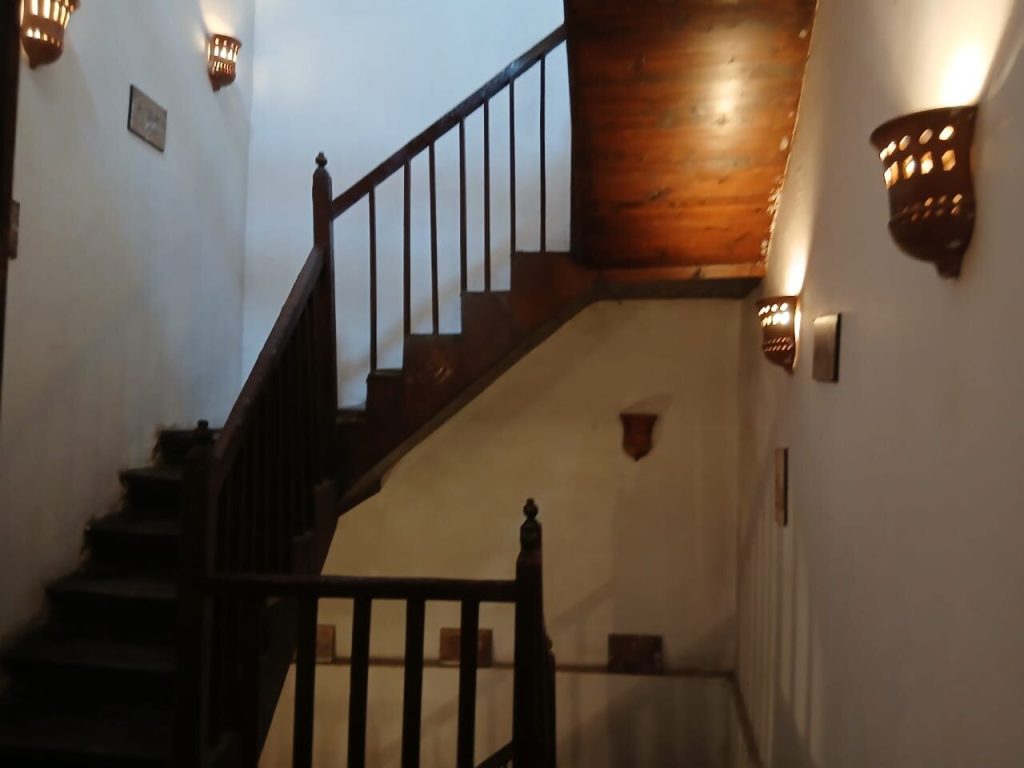
From a simple heritage house to a hotel at the top of the list of the best in Al-Qusair
Mustafa Sabbak, a young man from the Al-Abbadah tribe, confirms that managing a heritage hotel in the heart of Al-Qusair was not an easy task. It required a great deal of effort in marketing and preserving the identity and authenticity of the place. He points out that he started working at the hotel in 2018 with the aim of offering a different tourist experience that would enable visitors to experience the real local life in the city.
Mustafa adds that despite its small size, consisting of only three floors and six rooms, the hotel quickly became the highest-rated hotel in Al-Qusayr, surpassing even some international tourist resorts. This is thanks to its heritage character and authentic experience that combines simplicity and human warmth.
Restoration work
Regarding the restoration work, Mustafa explains that engineer Peter Willem Berg collaborated with local residents and enlisted the help of a number of specialist architects to restore Al-Qassir’s old houses. Berg worked within the Al-Qassir Heritage Preservation Society, of which he was one of the founders. This facilitated the restoration process and made it easier to obtain grants for heritage projects in accordance with legal frameworks.
Mustafa adds that Al-Qasr is still outside the official tourism plans of the Ministry of Tourism and its agencies. This has prompted the city’s residents to rely on social media to promote it themselves. A number of other popular hotel owners have followed his approach in offering authentic local experiences to tourists. This has led to the city experiencing a huge influx of visitors during holiday seasons, becoming, as Mustafa describes it, “fully booked.”
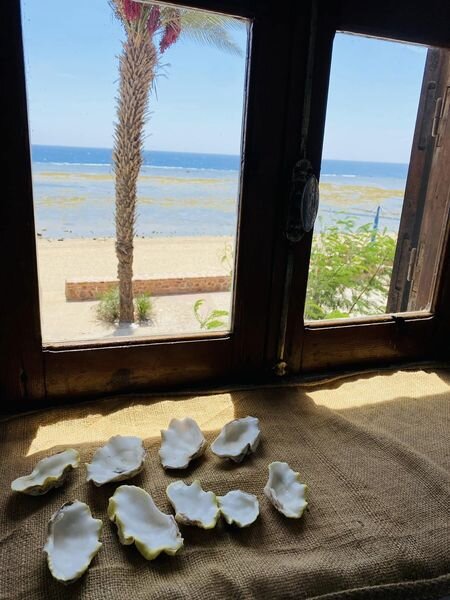
From a haunted house to a museum of living memory
Dr. Taha Al-Jawahiri continues his story, saying: “In 1997, we stood in front of Sheikh Tawfiq’s house, known among the people of Al-Qusayr as the House of Ghosts. Its cracked walls told forgotten stories from the city’s history. We drew precise architectural plans, as if we were rebuilding a memory that had been lost with time.”
He continued: ” We planned the restoration work with a mixture of caution and enthusiasm. We realized that the goal was not just to rebuild an old house. It extended to preserving the cultural identity of Al-Qusayr and presenting a development model that connects the past with the present and lays the foundations for the future. After a quarter of a century of effort, the dream has become a tangible reality.”
Built from sea stone
Al-Jawahiri explains that Sheikh Tawfiq’s house consists of three floors. It was built from sea stone, which contains the remains of coral reefs and marine organisms. The walls look like paintings of living nature, with details that differ with every glance.
He adds that the hotel management was keen to name each room after a historical figure from the city. This is an expression of Al-Qassir’s identity and its deep connection to the sea and history. The “Company” room refers to the phosphate company founded by the Italians in 1910. When they discovered the region’s wealth of phosphate, they built an Italian-style school, hospital, and church, which still stand today and are open to visitors.
The “Cable Car” room is dedicated to commemorating the old cable car, whose traces were clearly visible in front of the hotel beach and whose remains can still be seen today. The “Italian Quarter” room is named after one of the historic neighborhoods built in Italian style for the workers and technicians of the phosphate company. It is only a minute away from the hotel and overlooks the sea.
The “Mahmal” room embodies the atmosphere of the annual Mahmal Sharif celebrations, when decorated camels roamed the streets of Al-Qusair to celebrate the arrival of the Kaaba cover from Egypt to the Hejaz via the city’s port. The “Qatayir” room takes its name from the large wooden sailing ships that were once used for fishing and trade across the Red Sea. The “Port” room evokes memories of the old port of Al-Qassir, which witnessed Napoleon Bonaparte’s campaign on his way to conquer Egypt and Syria. Before the English fleet intervened to protect the city and repel the aggression.
Dr. Taha concludes his talk by emphasizing that every corner of this house tells a chapter of Al-Qusayr’s history. Sheikh Tawfiq’s house was not just a stone building, but a living document that encapsulates centuries of trade, cultural diversity, and human interaction between land and sea in this ancient city.

